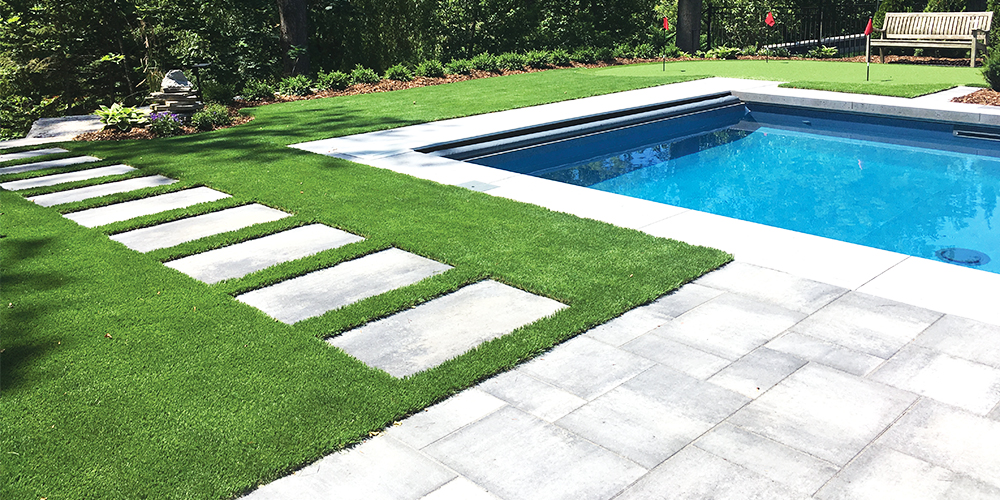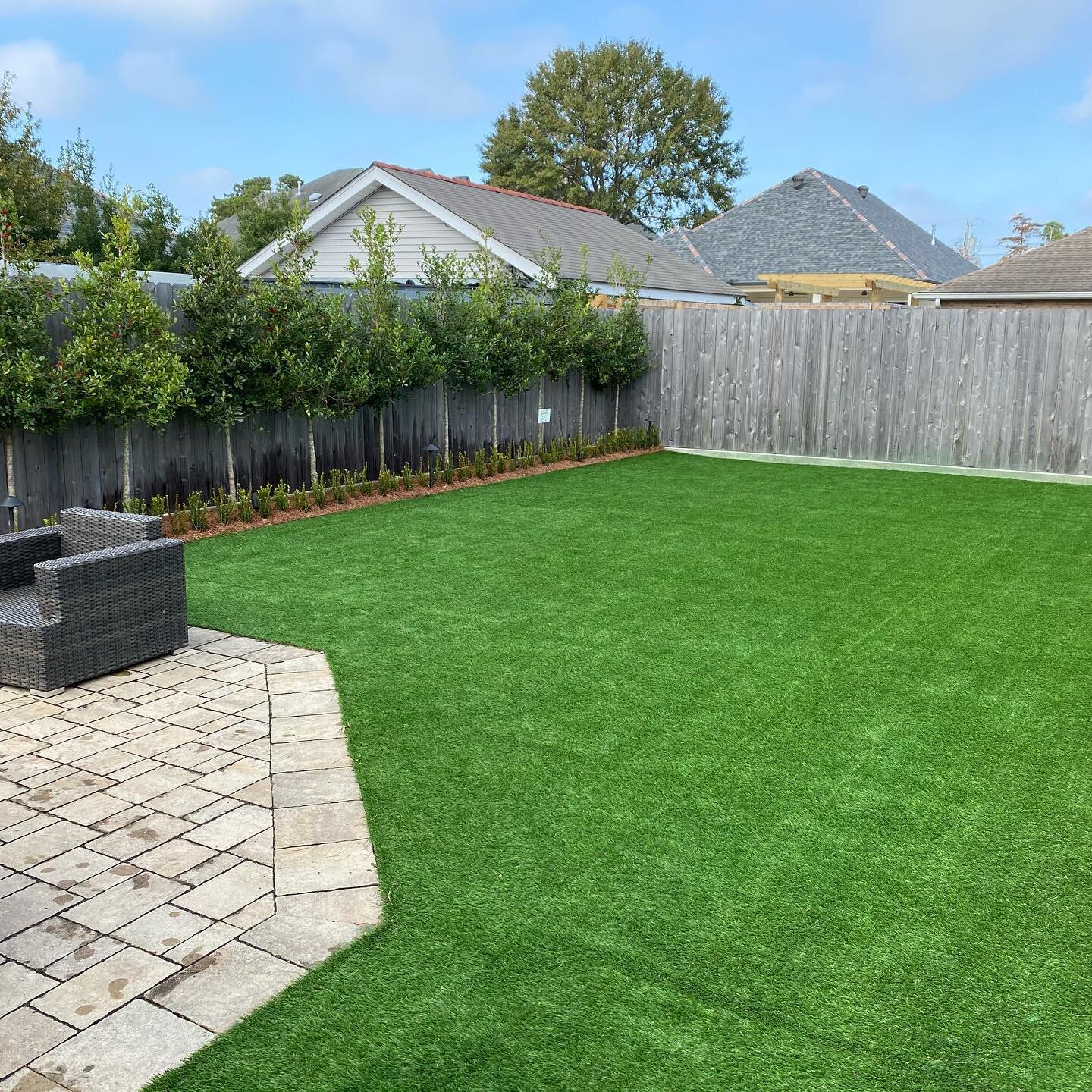Custom Turf Installation Phoenix AZ for Homes, Businesses, and Play Areas
Custom Turf Installation Phoenix AZ for Homes, Businesses, and Play Areas
Blog Article
Delve Into the Environmental Perks of Opting for Synthetic Grass Solutions
The adoption of synthetic grass remedies provides an engaging possibility to address pushing ecological challenges. By dramatically reducing water usage and reducing the application of hazardous chemicals, these alternatives not just promote lasting landscaping however also protect local ecosystems. The reduced carbon impact associated with decreased maintenance activities adds to a much more lasting technique to land monitoring. Nonetheless, the implications of these benefits expand beyond mere preservation efforts, increasing concerns regarding their long-lasting effect on environment conservation and total ecological equilibrium. Discovering these measurements exposes an intricate interaction worth considering.
Water Preservation Perks
One of the most considerable advantages of synthetic lawn is its ability to preserve water. In contrast, artificial lawn does not need watering, substantially lowering the total demand for water resources.
By removing the requirement for routine watering, synthetic grass contributes to sustainable landscape practices and aids reduce the ecological effect of too much water intake. The conservation of water expands to the decrease of drainage, which can lead to dirt erosion and river air pollution.
Furthermore, the installment of synthetic grass enables communities and property owners to allot water sources much more efficiently, concentrating on essential uses such as alcohol consumption water and agriculture. The change in the direction of artificial lawn not just advertises liable water usage but likewise aligns with wider ecological objectives focused on maintaining natural sources.
As neighborhoods significantly focus on sustainability, the water conservation benefits of fabricated lawn offer a compelling case for its adoption in industrial and domestic landscape design tasks.
Minimized Chemical Use
The transition to fabricated turf considerably lowers the reliance on chemical therapies commonly utilized in all-natural turf upkeep. Traditional grass monitoring commonly entails the application of chemicals, herbicides, and plant foods to advertise growth and control insects. These chemicals can position risks to human wellness, neighborhood wildlife, and the setting, contributing to dirt and water contamination.
In contrast, fabricated lawn eliminates the requirement for these hazardous materials. By reducing the release of synthetic substances into the ecological community, artificial grass advertises healthier soil and water systems.
Moreover, the absence of chemical overflow related to synthetic grass setups assists secure neighborhood waterways from contamination, supporting aquatic life and maintaining biodiversity. Arizona turf. As neighborhoods significantly prioritize sustainable practices, choosing for artificial turf offers a feasible service that aligns with ecological conservation goals. With this change, homeowner can appreciate rich green areas without endangering environmental health, leading the way for an extra sustainable future
Lower Carbon Footprint

Furthermore, the installation of synthetic grass can cause considerable water preservation. Natural lawns need considerable amounts of water for watering, which not just includes in the carbon footprint related to water extraction and therapy read this article yet likewise pressures local water resources. On the other hand, synthetic grass requires minimal upkeep, requiring no watering, consequently substantially minimizing water usage and its associated energy costs.
Additionally, the durability of synthetic grass adds to its decreased carbon influence. With a life expectancy of as much as 15 years or even more, the requirement for frequent replacements is diminished, causing much less waste and lower power intake in manufacturing and taking care of conventional turf choices. Generally, synthetic grass check my source presents a lasting option for eco aware landscape design.
Environment Preservation
Environment preservation is a crucial factor to consider in the discussion over landscape design selections, especially when comparing synthetic grass to all-natural turf. All-natural lawn yards typically require substantial upkeep, consisting of making use of herbicides, plant foods, and pesticides, which can adversely affect local communities. These chemicals can seep into the soil and rivers, harming native flora and animals and interfering with local environments.
In comparison, man-made turf provides an opportunity to minimize the ecological impact of landscaping. By choosing for artificial turf, homeowners can decrease the disruption of natural environments related to traditional yard treatment practices. Synthetic grass eliminates the demand for damaging chemicals, therefore protecting close-by wild animals and maintaining the stability of bordering ecological communities. Furthermore, the installment of synthetic grass can bring about the conversion of former turf areas right into even more biodiverse landscapes, such as pollinator yards or native plant areas, which can support regional wild animals.
Inevitably, the change to synthetic grass not only conserves water and minimizes upkeep efforts however additionally cultivates a much more harmonious connection between human activities and the click for source natural surroundings, advertising habitat preservation in the procedure.
Long-Term Sustainability
Lasting sustainability is a critical consider assessing the advantages of artificial lawn over standard turf yards. Among the most significant advantages of man-made turf is its durability; it can last approximately 15-20 years with very little maintenance, whereas all-natural turf needs regular reseeding and substitute. This durability reduces the demand for constant sources, such as water, fertilizers, and chemicals, which are vital for maintaining a healthy grass yard.
Additionally, synthetic grass adds to a decrease in carbon discharges linked with yard treatment equipment. Conventional lawns commonly require gas-powered lawn mowers, leaners, and blowers, every one of which add to air pollution. Phoenix turf companies. In contrast, synthetic grass gets rid of the demand for such equipment, promoting a cleaner setting
Additionally, the manufacturing of synthetic grass increasingly uses recycled materials, boosting its sustainability account. As producers embrace environmentally friendly techniques, the environmental impact of artificial turf remains to reduce.

Final Thought
The fostering of man-made turf remedies provides substantial environmental advantages, including significant water conservation, lowered dependence on hazardous chemicals, and a reduced carbon footprint. Man-made turf aids in maintaining natural environments by decreasing land disturbance and advertising lasting sustainability through the usage of durable materials. Jointly, these factors underscore the capacity of synthetic grass to add favorably to environmental health and use a viable alternative to standard landscape design practices in an increasingly resource-conscious world.
In comparison, fabricated turf does not need watering, significantly lowering the overall demand for water resources. By reducing the launch of synthetic compounds into the environment, fabricated turf promotes much healthier dirt and water systems.
Furthermore, the installation of synthetic grass can result in considerable water conservation. In contrast, synthetic grass requires very little maintenance, needing no watering, consequently dramatically lowering water use and its linked energy costs.

Report this page